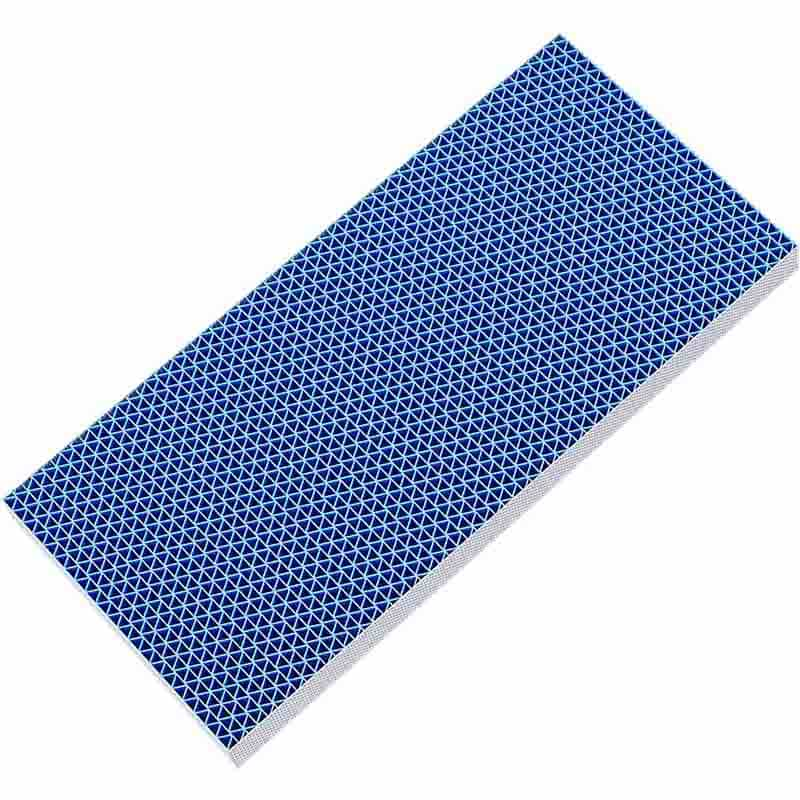Humidifiers play an essential role in maintaining optimal indoor air quality, particularly during the dry months. For many consumers, ensuring that their humidifiers work efficiently for the long term requires attention to parts like the humidifier wick. This small yet vital component helps absorb water and ensures the humidifier’s evaporation process runs smoothly. However, as these wicks become worn over time, users may face issues like reduced humidity output, unpleasant odors, or even the growth of mold.

The wick is the heart of an evaporative humidifier. It draws water from the reservoir and provides a surface area for evaporation to occur. Without a properly functioning wick, the humidifier's ability to add moisture to the air diminishes. This is particularly important in areas where the air can become excessively dry, such as during winter, or in homes with heating systems that tend to dry out the air.
When the wick becomes clogged or overly saturated with minerals, it loses its efficiency. In turn, users may notice a decrease in the humidifier's performance, which can impact their health and comfort. Replacing the wick is an essential maintenance task that keeps the device functioning optimally and ensures the air remains properly humidified.
Signs It's Time to Replace the Wick
Decreased Humidity Output: If you notice that your humidifier isn’t producing as much moisture as it did when it was new, it might be a sign that the wick is no longer working effectively. As the wick becomes clogged with minerals or debris, it won’t absorb water as efficiently, leading to lower output.
Odor: A musty or unpleasant smell coming from your humidifier is a clear indication that mold, mildew, or bacteria have started to grow on the wick. These microorganisms thrive in moist environments, and when the wick isn’t replaced regularly, they can spread throughout your home.
Visible Damage: If the wick appears discolored, frayed, or torn, it’s no longer capable of performing its job properly. This kind of damage can occur due to extended use or poor maintenance.
Mineral Build-Up: If you live in an area with hard water, mineral deposits can accumulate on the wick over time. This build-up can clog the wick, reducing its ability to absorb water and perform as expected.
Choosing the Right Replacement Wick
Selecting the correct replacement wick is crucial to ensure your humidifier operates efficiently. Not all wicks are created equal, and they come in various sizes, materials, and designs. Here’s what to look for when choosing a new wick:
Compatibility: The most important factor when choosing a replacement wick is compatibility. Different humidifiers require different wick sizes and designs. It’s essential to consult your humidifier’s manual or manufacturer’s recommendations to choose the right size.
Material: Humidifier wicks are typically made of materials that can efficiently absorb water, such as cellulose, fiberglass, or a combination of both. Some wicks are designed to trap dust and other allergens, improving air quality.
Durability: Look for wicks that are durable and made to last longer. High-quality wicks typically offer better performance and require less frequent replacement.
Design Features: Some wicks come with additional features, such as antimicrobial coatings to prevent mold and mildew growth. Others are designed with a honeycomb structure to increase surface area and improve evaporation.
Eco-Friendliness: If sustainability is a concern for you, consider choosing a wick made from eco-friendly materials. Many brands now offer biodegradable wicks that help reduce the environmental impact of disposable humidifier components.
How to Maintain Your Humidifier Wick
To extend the lifespan of your wick and avoid the need for frequent replacements, regular maintenance is crucial. Here are a few tips for maintaining your humidifier wick:
Regular Cleaning: Clean your humidifier and wick regularly to prevent the build-up of dust, minerals, and bacteria. Always follow the manufacturer’s instructions for cleaning to avoid damaging the wick or other components.
Use Distilled Water: If you live in an area with hard water, using distilled water in your humidifier can reduce mineral buildup on the wick. This will prolong the life of the wick and improve the performance of your humidifier.
Replace Water Frequently: Stagnant water can lead to the growth of mold and bacteria. Replace the water in your humidifier frequently, especially during the warmer months, to prevent these issues.
Dry the Wick Between Uses: If you don’t plan to use your humidifier for a while, remove the wick and allow it to dry out completely before storing it. This will help prevent mold growth and ensure the wick stays in good condition for the next use.
Why You Should Replace the Wick Regularly
Regularly replacing your humidifier’s wick is essential to maintaining both the performance of the humidifier and the air quality in your home. Over time, wicks lose their effectiveness, and failure to replace them can result in a range of issues, including reduced humidity, poor air quality, and even potential health risks.
Replacing the wick ensures that the humidifier can continue to add the proper amount of moisture to the air, which is particularly important for people with respiratory issues, allergies, or dry skin. Humidifiers can also help prevent static electricity and protect wood furniture, musical instruments, and other sensitive items from damage caused by low humidity levels.
The Benefits of Using a High-Quality Replacement Wick
Investing in a high-quality replacement wick can offer several benefits, including:
Improved Performance: A high-quality wick will improve the efficiency of your humidifier, ensuring that it operates at peak performance and maintains optimal humidity levels in your home.
Better Air Quality: A well-maintained wick can help reduce allergens and bacteria in the air, contributing to cleaner, healthier indoor air quality.
Cost Savings: Although high-quality wicks may cost a little more upfront, they tend to last longer and perform better, reducing the need for frequent replacements and repairs.
Environmental Impact: Many high-quality wicks are made from more sustainable materials, helping to reduce your environmental footprint while still providing effective humidification.
Conclusion
Humidifiers are essential for creating a comfortable, healthy indoor environment, especially during dry months. Maintaining your humidifier and replacing the wick regularly ensures that your device continues to work effectively and improves the air quality in your home. By selecting the right replacement wick and following proper maintenance practices, you can ensure that your humidifier delivers optimal performance, reduces allergens, and promotes better health. Always remember to choose a compatible, high-quality wick that meets your needs, and your humidifier will continue to keep your indoor air fresh and well-moisturized.





